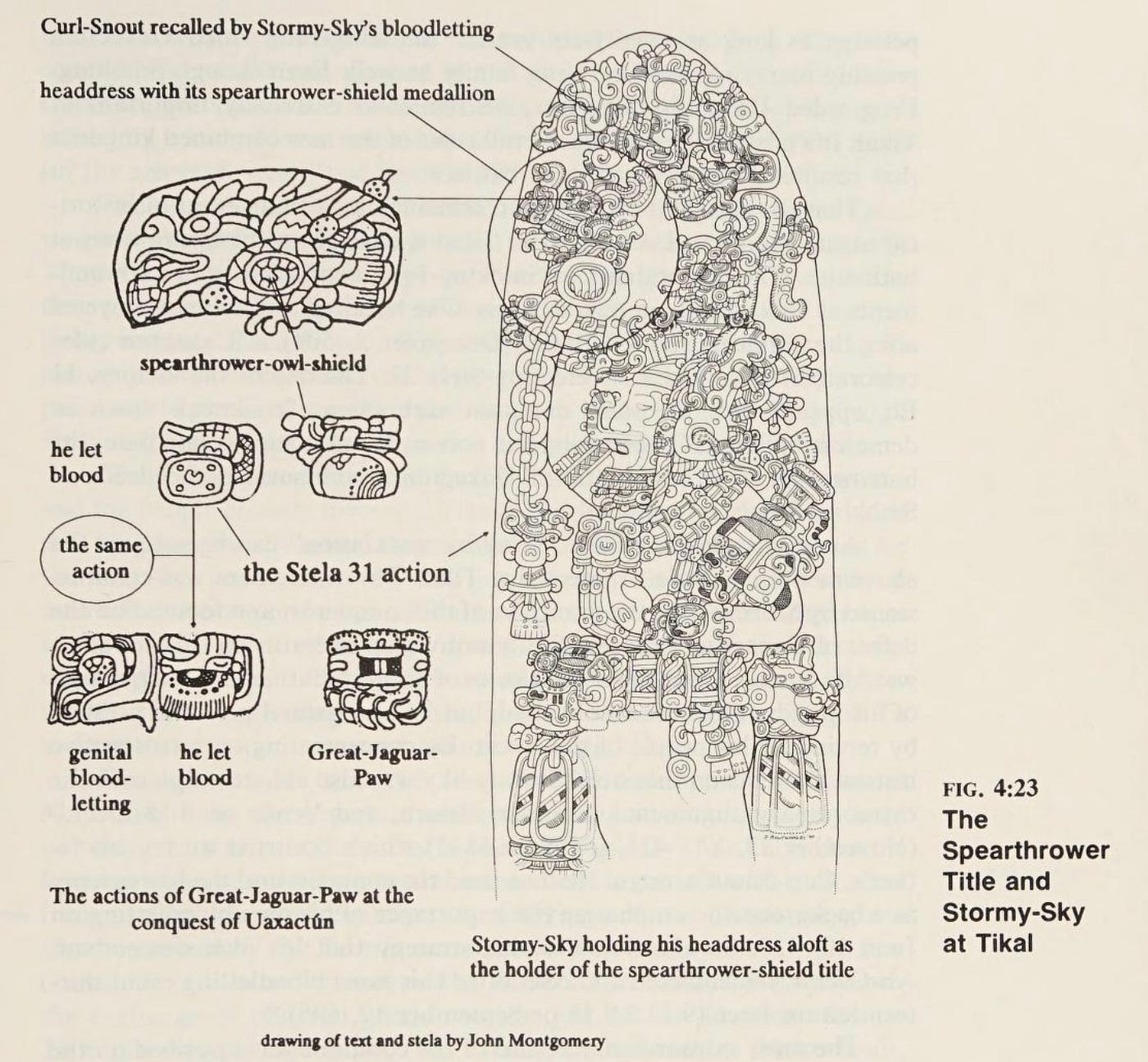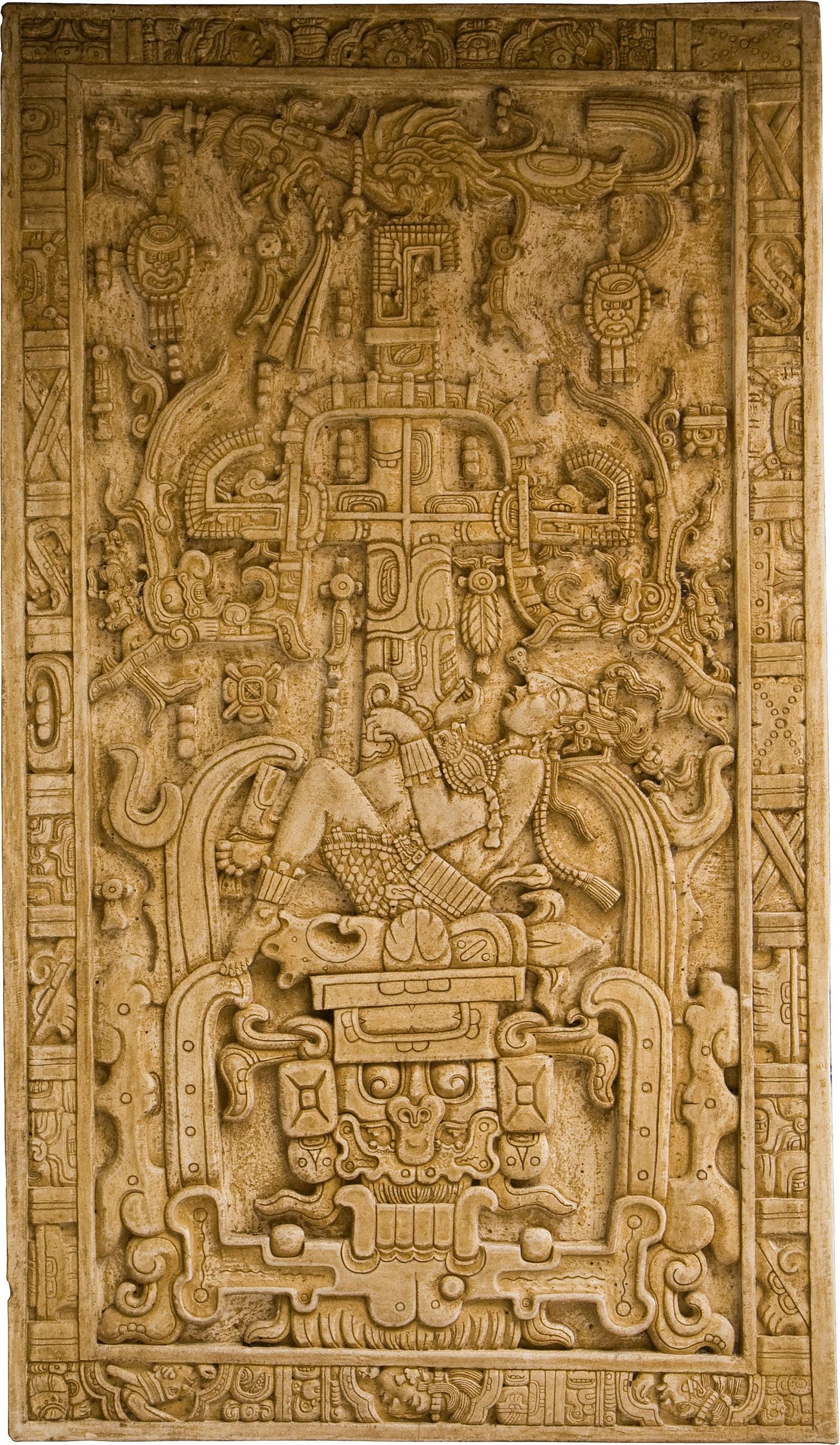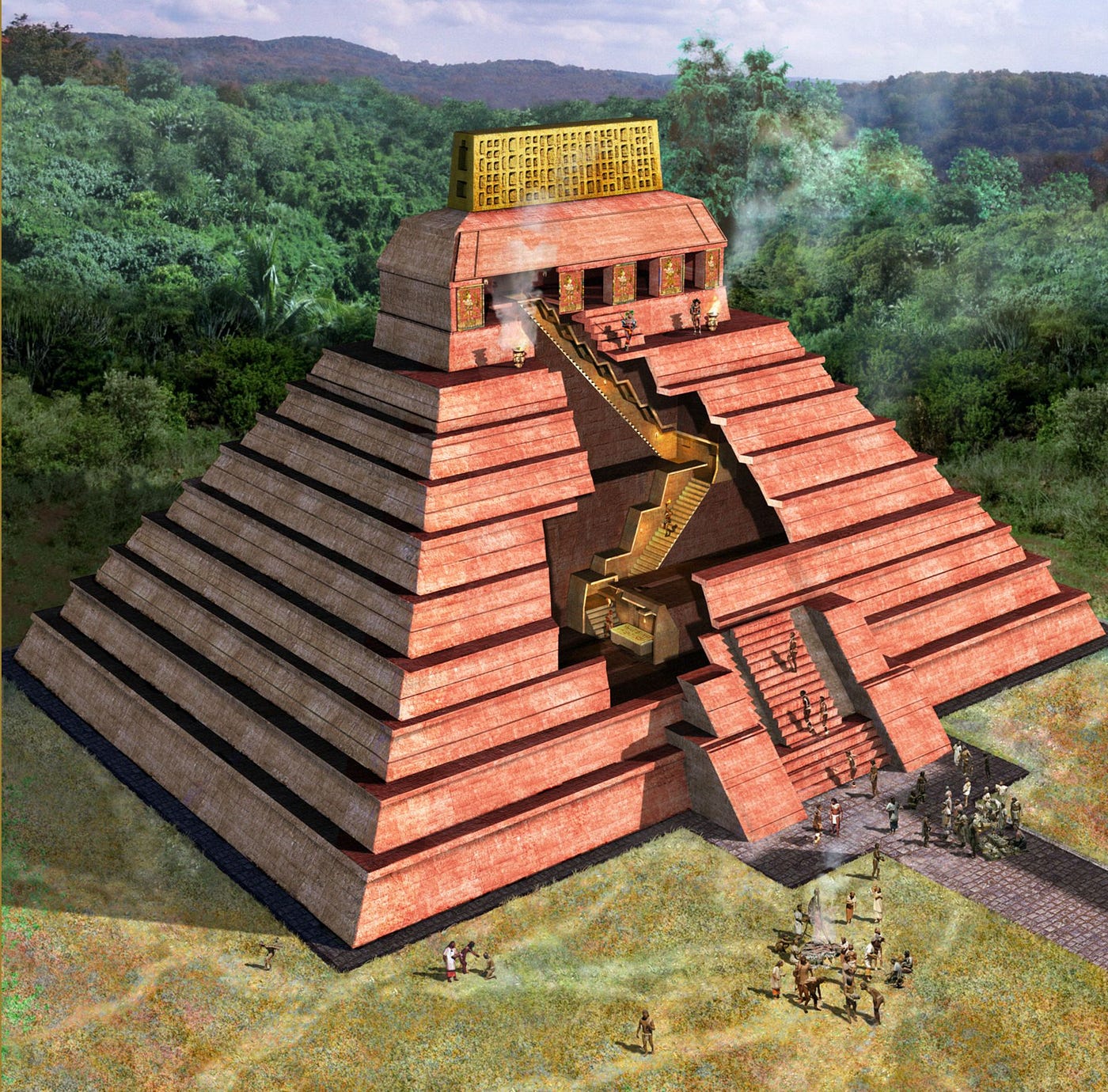What The Blood Sacrifice Of The Maya Can Teach Us About Today

Mesoamerican civilization is usually characterized as blood-thirsty, which I suppose it technically is. As the late Linda Schele and David Freidel write in A Forest Of Kings,
Now we call this world Mesoamerica, a term which refers not only to geography, but to a Precolumbian cultural tradition that shared a 260-day calendar, religions beliefs including definitions of gods and bloodletting as the central act of piety, [etc]
In that book’s area of focus (the Maya, roughly 0–1000 AD, or 8.4.0.0.0 to 10.4.0.0.0), within that area of focus, they describe the blood-letting rituals of Maya kings which I think should be viewed with an open and self-critical mind. Maya rituals are, to modern sensibilities, gruesome, but we should be aware that modern sensibilities include destroying the whole natural world.
Ours is a deeply blood-thirsty civilization which simultaneously faints at the sight of blood. We’re both killers, and I’d venture that modern civilization is A) worse and B) cowardly and delusional. Maya kings at least drew blood with their own hands, and from their own bodies. Hence, I will give you the ‘gruesome’ details, but not to gawk at. They are elder and we are younger and they deserve to be treated with respect or, at the least, an open mind.

A Look Into Maya Sacrifice
This is how Schele and Freidel describe the heart of Maya spiritual life:
During the Classic period, the heart of Maya life was the ritual of bloodletting. Giving the gift of blood from the body was an act of piety used in all of their rituals, from the births of children to the burial of the dead. This act could be as simple as an offering of a few drops of one’s blood, or as extreme as the mutilation of the different parts of the body to generate large flows of this precious fluid. Blood could be drawn from any part of the body, but the most sacred sources were the tongue for males and females, and the penis for males.
Representations of the act carved on stelae depict participants drawing finger-thick ropes through the wounds to guide the flow of blood down onto paper. Men with perforated genitals would whirl in a kind of dervish dance that drew the blood out onto long paper and cloth streamers tied to their wounded members. The aim of these great cathartic rituals was the vision quest, the opening of a portal into the Otherworld through which gods and the ancestors could be enticed so that the beings of this world could commune with them.
The Maya thought of this process as giving “birth” to the god or ancestor, enabling it to take physical form in this plane of existence. The vision quest was the central act of the Maya world.
What the king was seeing was the Otherworld. As the authors write, “The Underworld was sometimes called Xibalba, but it is perhaps closer to the original Maya understanding to think of Xibalba as the parallel unseen Otherworld into which the Maya kings and other shamans could pass in ecstatic trance. Like the world of human beings, Xibalba had animals, plants, inhabitants of various kinds, and a landscape with both natural and constructed features. At sundown Xibalba rotated above the earth to become the night sky.”
The king’s body physically became a conduit to Xibalba, amplified through massive temples which were aligned to cosmic events. In the book, the authors describe (with poetic license) the burial of Pacal in his tomb and the assumption of king’s role by his son, Chan-Bahlum.

Chan-Bahlum had been fasting for three days and had to go up and down the stairs to his fathers crypt, a symbolic (to us) descent into Xibalba. After interring his father, his first task was human sacrifice:
In the sudden silence that fell after the workers had departed, Chan-Bahlum could hear the scuffling descent of more people, this time from the temple above. He turned and saw five captives being dragged down the stairs by the honored kinsmen of the dead king…
He closed his hand on the hilt of the flint knife he had brought with him for this act of sacrifice. In silence he plunged it into the captive’s chest and struck up into the heart… The limp bodies of the dead were tossed in tangled abandon into the box.
His next task was self sacrifice, in a way that we today find incomprehensible.
Chan-Bahlum emerged through the floor of the temple, where the spirit tube from his father’s coffin ended in the head of the Vision Serpent. When he had made his careful way around the ledge beside the stairway entrance, shamans took him by the arms and stripped away his loincloth. One of them handed him a fresh blade of obsidian just struck from a core. He reached down and grabbed his penis, holding it tightly as he pierced it three times with the point of the bright black razor. Handing back the blade, he pulled long strands of bark paper through the wounds and watched them turn red with the sacred blood of sacrifice. It was his first sacrificial act as patriarch of the royal clan, an act of symbolic birth in the midst of death.
A lot of this sounds, well, rough, but I encourage you to see it on the Maya’s own terms. We live in a world of violence whether we like it or not and we all ritualize it in different ways. The Maya nobility engaged in astrologically timed battles amongst each other with the goal of taking each other captive, in the knowledge that losing meant at best immediate sacrifice and at worst decades of captivity and, well, torture, followed by sacrifice. This was how they ritualized and in effect controlled violence within their societies.
Today we ritualize violence behind armed police and constant standing armies (which the Maya simply didn’t have), and we think ourselves above the gruesome Mesoamericans, but this is delusional. The ruling White Empire (now centered in America) cages and tortures more people (per capita) than ever in human history. After 9/11, millions of unconnected civilians were murdered and piled on top of those graves. Instead of limited and highly ritualized violence we have unlimited systemic violence writ large across a planetary empire. In this context, we cannot be judgemental about a little penis blood and ritualized human sacrifice.
Sacrifice And Today
One thing I find striking about Maya is how much the kings (once that became a concept) sacrificed. Kings ate better (were taller) and had more access to precious imports like jade and monopolized trade of things like obsidian, but they also had to regularly stab their own penises and run ropes through their tongues. They physically fought their own battles at great personal risk. They weren’t distant ruling elites. They literally had foreskin in the game.
I wonder what our politics would be like if politicians had to ritually bleed their own penises. I wonder what war would mean if these fuckers fought their own battles. Today we have no concept of sacrifice and elites must always be bailed out, protected, and coddled in order to ‘do their jobs’. But they’re doing a terrible job. The Maya had a deep sense that everything cost something, and the people at the top were expected to sacrifice. Now there’s a sense that the environment and labor can be abused forever, and the people at the top should be protected from all consequences. And you can see how that plays out.
I’ve been reading about the Maya because I like old stuff, but also because I’m really trying to understand the concept of sacrifice. It’s so foreign to my way of thinking today but so fundamental to every ancient civilization. Even when I was leaving on a trip my wife’s family gathered to pray and cover me in the ‘blood of Jesus’. I used to find this particular incantation creepy, but now I don’t mind. I still don’t understand, but I’m trying to. Behind every religion there’s a concept of A) going into an altered state and B) that being an uncomfortable one. Jesus on the cross, the Prophet Muhammad fasting in the desert, the Buddha starving on his way to the Middle Path, Sita walking into fire.
We live in an age where we expect everything to be convenient and pleasing and this obviously leads to ruin. We have incurred massive environmental and karmic debt because we don’t even have the concept of paying for anything anymore. We look upon sacrifice as barbaric, which inflicting monstrous barbarism upon the entire planet in our self-satisfaction. I often say that there is a price for this industrial civilization and that it will be paid in blood. I can’t help but wonder if that general principle was known by the ancients and in expressed in ways that seem gruesome to us. But just look upon what moderns have done to the planet. Who’s blood-thirsty now?